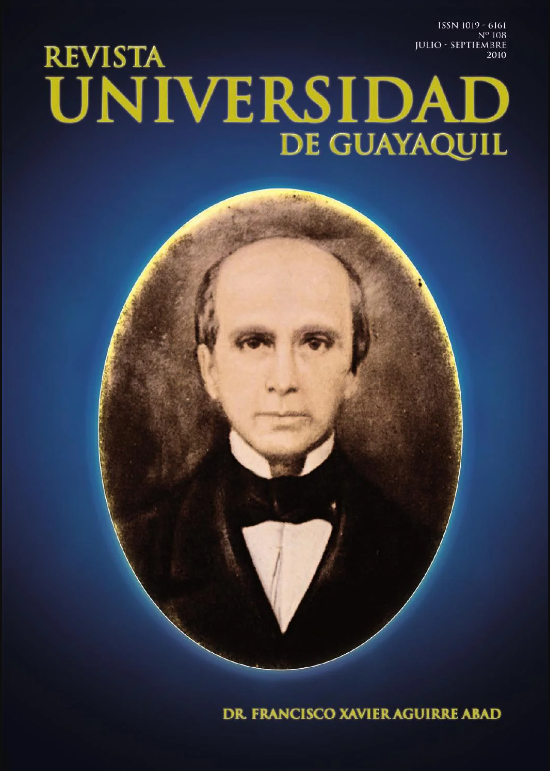Chest trauma morbidity and mortality by penetrating injury
DOI:
https://doi.org/10.53591/rug.v108i3.420Keywords:
Chest trauma, Penetrating injury mortalityAbstract
Chest trauma is responsible for 25% of annual trauma deaths in Latin America and they could be closed, opened and by penetrating objects. Its treatment could be complex and changeble depending of trauma, severity of lesion and complication with colateral and mixed injuries. Goals of this study were: 1. To Identify most common thoracic trauma types registered in Hospital Luís Vernaza Emergency Service; 2. To identify most common emergency treatments; 3. To identify most common affected intrathoracic organs; 4. To determine trans and postsurgical mortality rate; 5. To register most frequent post surgery complications. Retroprospective, analytical and unidirectional methodology was applied. Penetrating gun trauma was the most common clinical injury, 81%. Left anterolateral thoracotomy was performed in 72%. Heart was the most affected organ followed by the left lung; trans surgical mortality is 2% and postoperative 20%, associated with abdominal visceral lesions. Main shock postoperative complications was 52% and respiratory distress syndrome 76%.
References
Andrade –Alegre, R. Resecciones pulmonares en trauma. Panam J Trauma 2004, 47-49.
Andrade –Alegre, R. Trauma cardiaco penetrante . Panam J Trauma 2004, 11(2): 50-57.
Andrade –Alegre, R. Intracardiac misiles : Should they be Removed? Panam J Trauma, 2002, 9:787-80
Asencio J, Berne J, Demetriades D, et al One hundred five penetrating cardiac injury: a 2 years prospective evaluation. J. Trauma 1998, 44: 1073-1082.
Asencio J, Stewart M, Murray J, et al. Penetrating cardiac injuries. Surg Clin North Am 1996, 76: 785-719.
Asher H, Walden R. Control de daños en Traumatismos Abdominales. Clinic quirurg nort Amer 1997, 4:859-873.
Atlas. Student Manual, American College of Surgeons. Committee on Trauma. ATLS, Advanced Trauma Life Support Course for Physicians. Fifth esdition. American College of Surgeons.Chicago 1997.
Blatchford J, Anderson R. The evolution of the management of penetrating wounds of the heart. Ann Surg 1985, 202:615-623.
Boyd C, Tolson M. A revision of the trauma score J Trauma, 1989 29: 623-629.
Boyd M, Vanek V. Emergency room resuscitative thoracotomy: When Is it indicated ? J Trauma 1992, 33:714.
Burch J, Feliciano D, Mattox K. The atriocaval shunt. Facts and fiction. Ann Surg 1998 136:186: 686.
Burch J, Ortiz V. Abbreviated laparotomy and planned reoperation for critically injury patients. Ann Surg 1992, 215:476-484.
Champion H, Lopes W. The Injury Severity Score Revisited. J. Trauma 1988; 28: 69-77.
Contreras. Martiniano et al Manual de normas y procedimientos en trauma Segunda edición, Editorial Universidad de Antioquia, Colombia, 2001, 107-123.
Cryer H, Navroudis, C. Shock,transfusion,and pneumonectomy. Ann Surg 1990, 212: 197-201.
Donald D, Thoracic inlet injuries. Operative trauma management. Edit Appleton & Lange, USA, 1998, 232-237.
Ferrada, Ricardo. MEJÍA, William. Toracotomía de resucitación. Cuidados Intensivos y trauma. Distribuna, Colombia, 2002, 497-510.
K. Soreide, H. Soiland, Resuscitative emergency thoracotomy in a Scandinavian trauma hospital, Is it justified? Injury,volume,issue1,page 34-42.
Larrey, D. New surgical procedure to open the pericardiumin case of fluid in its cavity. Clin Chir 1829; 2:303-337
Mathew, J. Call, J. Hirshberg, Asher. Lesiones vasculares aórticas y de otros vasos torácicos mayores. Clin Quirurg Nort Ame 6/2001 : 1403-1420.
Matthew, J. Wall, J. Control de daños en traumatismos torácicos. Clinic Quirurg Noth Am 4/1997:859-873.
Matthew, J. Wall, J. Mattox, Kenneth. Indicaciones de la toracotomía Trauma 4ta edición, Mc Graw Hill, USA, 2001, 507-516.
Mattox, K. Beall, A. Cardiorraphy in the emergency center. J. Thorax Cardiovas Surg 1974, 68 :886-895.
Morales, C. ¿Evita la toracoscopía la realización de toracostomías en el paciente con trauma? Panam J Trauma 2004, 11.2:13-20.
Naunheim, K. Postoperative care and monitoring. Chest Surg Clin North Am 1999 9: 501-513.
Ospina, J. Guevara, A. Parra, L. et al. Uso práctico de los índices de trauma. Rev Colombiana Cir, 1992, 8: 86-96
Ospina, L. Chica, G. Indices de severidad en el trauma. Cuidados intensivos en el trauma. Distribuna, Colombia, 2002, 383-402.
Rhee, P. Acosta, J. Bridgeman, A. et al. Survival alter department thoracotomy: Re- View of published data from the last 25 years. J Am Coll Surg 2000, 190:288- 298.
Rotondo, Michael. Zonies, David. Secuencia del control de daños y lógica subyacente . Clinic Quirurg Nort Amer. 4/1997: 757-774
Rumor, M. Moore, E. Moore, F. The abdominal compartment. Syndrome. Surg Clin North Am 1996, 76: 833-842.
Turégano Fuentes, Toracotomías urgentes en traumatismos penetrantes y cerrados. Cirugía Española: Vol 73 n3, 2003:154-160.
Van Natta, T. Morris, J. Injury Scoring and trauma outcomes. Em: Trauma fourth edit Mc Graw Hill, USA, 2000, 69-78.
Wagner, J. Obeid, F. Karmy, J. et al. Trauma pneumonectomy revisited: The Role of simultaneously stapled pneu monectomy. J Trauma 1996, 40:590-594.
Wall, M. Soltero, E. Damage control for thoracic injuries. Surg Clinic North Am 1997, 77: 863-867.
Walter, L. Biffl, Ernest. Moore, Alden. Toracostomía en el Departamento de urgencia. Trauma 4ta edición, Edit Mc Graw Hill, USA, 2001 265-280
Published
How to Cite
Issue
Section
License

This work is licensed under a Creative Commons Attribution-NonCommercial-NoDerivatives 4.0 International License.

This work is licensed under a Creative Commons Attribution-NonCommercial-NoDerivatives 4.0. International License.
You are free to:
- Share — copy and redistribute the material in any medium or format
- The licensor cannot revoke these freedoms as long as you follow the license terms.
Under the following terms:
- Attribution — You must give appropriate credit , provide a link to the license, and indicate if changes were made . You may do so in any reasonable manner, but not in any way that suggests the licensor endorses you or your use.
- NonCommercial — You may not use the material for commercial purposes .
- NoDerivatives — If you remix, transform, or build upon the material, you may not distribute the modified material.
- No additional restrictions — You may not apply legal terms or technological measures that legally restrict others from doing anything the license permits.































